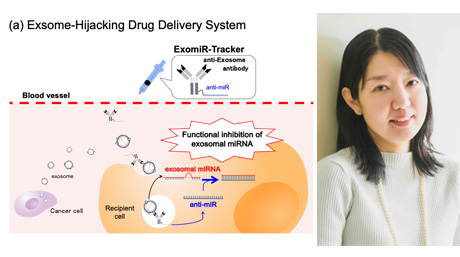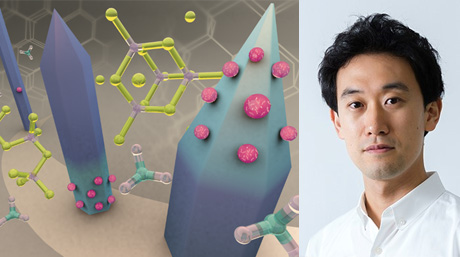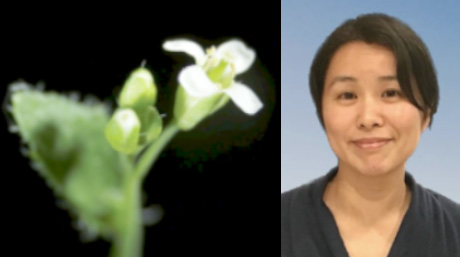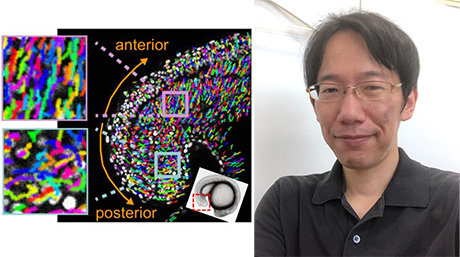Life Science and Technology News
【Labs spotlight】 Iwasaki Laboratory
Enjoy science!
The Department has a variety of laboratories for Life Science and Technology, in which cutting-edge innovative research is being undertaken not only in basic science and engineering but also in the areas of medicine, pharmacy, agriculture, and multidisciplinary sciences.
This "Spotlight" series features a laboratory from the Department and introduces you to the laboratory's research projects and outcomes. This time we focus on Iwasaki Laboratory.
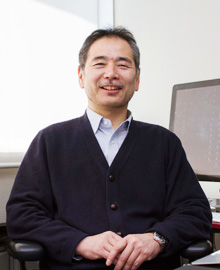
Areas of Supervision
Primary/Life Science and Technology
Professor Hiroshi Iwasaki![]()
(Cell Biology Unit, Institute of Innovative Research)
| Degree | PhD 1991, Osaka University |
|---|---|
| Areas of Research | Molecular biology, Molecular genetics, Biochemistry, Protein Sciences, Single molecule analysis. |
| Keywords | homologous recombination, DNA double-stranded breaks, DNA repair, Holliday junctions, DNA damage checkpoint, genetic diversity, genome integrity, cancer, fission yeast. |
| Website | Iwasaki Laboratory Cell Biology Unit |
Research interests
What is the research subject of Dr. Iwasaki's laboratory?
Homologous recombination (HR) involves the exchange of sequences between two homologous DNA molecules and occurs in all living organisms. It plays important roles not only in generating genetic diversity but also in maintaining genome integrity by mediating DNA repair. The molecular mechanism of HR can be divided into three steps (early, central, and late). The early step or initial step is a process during which a recombinogenic single-stranded DNA with a 3' overhang is produced. A protein complex composed of Mre11, Rad50 and Nbs1 (namely MRN complex), in addition to other protein factors, such as nucleases and helicases, are involved in this process. Subsequently, a recombinase (namely Rad51, Dmc1, or RecA) binds to the resultant single-stranded region to form a nucleoprotein filament. This nucleoprotein filament (namely, presynaptic filament) initiates an homology search and catalyzes the strand exchange reaction, forming an intermediate with a unique DNA structure called a D-loop. Auxiliary protein factors (i.e., BRCA2, Rad52, and the Swi5-Sfr1 complex, among others) are required to form and activate the presynaptic filament. The D-loop may be further processed to form a Holliday junction, the classically proposed recombination intermediate of the HR reaction. In the late step, the intermediates are converted to recombination products (recombined DNA molecules) through several genetic pathways.
Our laboratory is interested in the molecular mechanisms of HR. How does the MRN complex generate recombinogenic single-stranded DNA? How do recombinases find homologous DNA and catalyze the DNA strand-exchange reaction? What is the nature of the auxiliary protein factors that activate recombinase filaments? How is the Holliday junction formed and resolved? What determines the choice of one pathway over another? These are some of the questions we are trying to address in our laboratory. To explore them, we take a multidimensional approach that includes molecular biology, genetics, biochemistry, physicochemistry, and structural biology. We use mainly the fission yeast, Schizosaccharomyces pombe, as a model organism.
Profile
Professional Career
| 2009 - present | Professor, Tokyo Institute of Technology |
|---|---|
| 2007 - 2009 | Professor, Yokohama City University |
| 2001 - 2007 | Associate Professor, Yokohama City University |
| 1991 - 2001 | Assistant Professor, Osaka University |
Education
- M.S. PhD., Osaka University
- B.S., Kyushu University
Awards
| 2016 | The Kihara Prize (Genetic Society of Japan) |
|---|---|
| 2013 | Prizes for Science and Technology (Research Category), The Commendation for Science and Technology by the Minister of Education, Culture, Sports, Science and Technology, Japan |
| 2001 | The GSJ Award for Young Scientist (Genetic Society of Japan) |
| 1991 | Young Scientist Award from the Inoue Foundation for Science |
Research findings
Selected publications
- 1.Multiple regulation of rad51-mediated homologous recombination by fission yeast fbh1. Tsutsui Y, Kurokawa Y, Ito K, Siddique MS, Kawano Y, Yamao F and Iwasaki H. PLoS Genet. (2014) 28. e1004542.
- 2.Dual regulation of Dmc1-driven DNA strand exchange by Swi5-Sfr1 activation and Rad22 inhibition. Murayama Y, Kurokawa Y, Tsutsui Y, Iwasaki H. Genes Dev. (2013) 27:2299-2304.
- 3.Mechanistic insights into the activation of Rad51-mediated strand exchange from the structure of a recombination activator, the Swi5-Sfr1 complex. Kuwabara N, Murayama Y, Hashimoto H, Kokabu Y, Ikeguchi M, Sato M, Mayanagi K, Tsutsui Y, Iwasaki H and Shimizu T. Structure (2012) 20:440-449.
- 4.An in vitro assay for monitoring the formation and branch migration of Holliday junctions mediated by a eukaryotic recombinase. Murayama Y and Iwasaki H. Methods Mol. Biol. (2011) 745:385-405.
- 5.The fission yeast meiosis-specific Dmc1 recombinase mediates formation and branch migration of Holliday junctions by preferentially promoting strand-exchange in a direction opposite to that of Rad51. Murayama Y, Tsutui, Y and Iwasaki H. Genes Dev. (2011) 25:516-527.
- 6.Nbs1 flexibly tethers Ctp1 and Mre11-Rad50 to coordinate DNA double-strand break processing and repair. Williams RS, Dodson GE, Limbo O, Yamada Y, Williams JS, Guenther G, Classen S, Glover JN, Iwasaki H, Russell P and Tainer JA. Cell (2009) 139: 87-99.
- 7.RAD6-RAD18-RAD5 pathway-dependent tolerance to chronic low-dose UV light. Hishida T, Kubota Y, Carr AM, and Iwasaki H. Nature (2009) 457: 612-615.
- 8.Molecular characterization of the role of the Schizosaccharomyces pombe nip1+/ctp1+ gene in DNA double strand break repair in association with the Mre11-Rad50-Nbs1 complex. Akamatsu Y, Murayama Y, Yamada T, Nakazaki T, Tsutsui Y, Ohta K and Iwasaki H. Mol. Cell. Biol. (2008) 28: 3639-3651.
- 9.Reconstitution of DNA strand exchange mediated by Rhp51 recombinase and two mediators. Kurokawa Y, Murayama Y, Haruta-Takahashi N, Urabe I and Iwasaki H. PLoS Biol (2008) 6: e88.
- 10.Formation and branch migration of Holliday junctions mediated by eukaryotic recombinases. Murayama Y, Kurokawa Y, Mayanagi K and Iwasaki H. Nature (2008) 451: 1018-1021.
- 11.Fission yeast Swi5/Sfr1 and Rhp55/Rhp57 differentially regulate Rhp51-dependent recombination outcomes. Akamatsu Y, Tsutsui Y, Morishita T, Siddique, MDP, Kurokawa, Y. Ikeguchi M, Yamao F, Arcangioli B and Iwasaki H. EMBO J. (2007) 26: 1352-1362.
- 12.The Swi5-Sfr1 complex stimulates Rhp51/Rad51- and Dmc1-mediated DNA strand exchange in vitro. Haruta N, Kurokawa Y, Murayama Y, Akamatsu Y, Unzai S, Tsutsui Y and Iwasaki H. Nature Struct. Mol. Biol. (2006) 13: 823-730.
- 13.Two different Swi5-containing protein complexes are involved in mating-type switching and recombination repair in fission yeast. Akamatsu Y, Dziadkowiec D, Ikeguchi M, Shinagawa H and Iwasaki H. Proc. Natl. Acad. Sci. USA. (2003) 100: 15770-15775.
- 14.Atomic structure of the RuvC resolvase: a Holliday junction specific endonuclease from E. coli. Ariyoshi M, Vassylyev DG, Iwasaki H, Nakamura H, Shinagawa H and Morikawa K. Cell (1994) 78: 1063-1072.
- 15.Escherichia coli RuvA and RuvB proteins specifically interact with Holliday junctions and promote branch migration. Iwasaki H, Takahagi M, Nakata A and Shinagawa H. Genes Dev. (1992) 6: 2214-2220.
- 16.Escherichia coli RuvC protein is an endonuclease that resolves the Holliday structure. Iwasaki H, Takahagi M, Shiba T, Nakata A and Shinagawa H. EMBO J. (1991) 10: 4381-4389.
- Research Laboratories and Subjects
- Professor Hiroshi Iwasaki Wins the 2016 Kihara Prize of the Genetics Society of Japan | Life Science and Technology News
Contact
Professor Hiroshi Iwasaki
Room 401, M6 building, Midorigaoka area, Ookayama campus
E-mail : hiwasaki@bio.titech.ac.jp
*Find more about the lab and the latest activities at the lab site![]() .
.
*May 1, 2025:Some of the content has been updated with the latest information.

